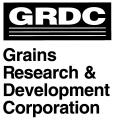Complete
The Surveillance Simulation project produced a simulation environment which will be used to estimate rates of spread of a disease and its time-changing extent over the landscape. It will provide computer-based models to disease outbreak managers, to predict the spread of emergent plant diseases and pests and improve response by biosecurity teams.
Research outcomes:
- A surveillance prediction simulation platform for validating surveillance strategies,
- novel landscape-level modelling techniques for pest spread simulation, and
- validated simulation technology using historical emergency plant pest incursion data.
Research implications:
This pathway of robust, easily extensible general EPP simulators, accessed via a web-server architecture is a very viable option for future development, commercialisation and/or roll-out.
Acknowledgements:
The research team acknowledges the CRC for National Plant Biosecurity (CRCNPB) for supporting this project.
The research team also expresses sincere thanks to many other researchers at UWA, DAFWA and CSIRO who have assisted with knowledge of the behavior of many pest species and with advice and feedback about the usability of the system.
PROJECT LEADER
Professor Mark Reynolds
Project Leader CRC10073: Surveillance Simulation Platform
mark@csse.uwa.edu.au
Phone: 02 6488 2279
Read More
PROJECT DETAILS
Complete
Term
November 2007 – June 2011
Budget
$879,998 (cash and in-kind support)
PROGRAM DETAILS
LOCATION
CORE CRC PARTICIPANTS
SUPPORTING CRC PARTICIPANTS
This project developed a dynamic, strategic trapping system which provides a similar or higher level of confidence as current static, passive grid systems in areas free from Queensland and Mediterranean fruit flies. It provides a more cost-effective and widespread fruit fly trapping network and more accurate information about fruit fly populations in remote areas of Australia.
Research outcomes
Fruit fly area freedom is vital for market access. Since 1990 it has been managed through codes of practice under national and international agreements. The standard practice is based on the deployment of static trapping grids covering orchards, towns and urban areas. The grids are relatively effective when numbers are high, but are an inefficient strategy to detect early fruit fly incursions and are becoming increasingly expensive to deploy and maintain due to the prescribed fixed distances between traps.
The aim of this project was to develop a science based rationale that will optimise trap placement for the detection of fruit fly. The strategy is to deploy traps in hosts at the time when they are most attractive to fruit flies, with the aim of gaining in efficiency in early detection of the incursive population. More effective and earlier detection will minimise the number of undetected incursions which lead to breeding populations, thereby reducing eradication costs and more effectively managing area freedom for market access.
Research was conducted in WA and NSW to determine if new methods termed ‘dynamic trapping’ would provide an equivalent proof of area freedom at lower cost. The standard trapping method where traps are placed in a grid system 0.4 - 1km apart (static trapping), was tested against a method of strategic trap deployment (dynamic trapping) in hosts at the time hosts held mature fruit whenever possible.
The dynamic trapping method was demonstrated to be more effective in the capture of C. capitata than the static trapping method in Donnybrook. The dynamic method detected fruit fly infestations earlier than the static method in Donnybrook (with low fly numbers) and required one-third to one-half the number of traps used in a static grid to obtain the equivalent information on detecting itinerant or established fly numbers required for the fruit fly code of practice. This result was consistent over the three seasons where population level was quite different in each season.
In areas with very low fly density (Manjimup, Pemberton) and in the area free region of Kununurra, there was no difference in fly detection between the static and dynamic trapping methods.
With Queensland fruit fly (Bactrocera tryoni), results were variable and inconclusive in three areas (Cootamundra, Junee and Gundagai) which had low-high fly densities. Similarly, the data for the Tumut orchard was limited and it is difficult to draw any conclusions. However, in Ganmain, a town of low fruit fly density, dynamic traps were more effective than static traps in capturing B. tryoni, in terms of both proportion of traps which detected flies and proportion of flies caught in traps.
Data mining research in South Australia showed how archival trapping data can be combined with modern spatial data mapping methods to improve the trapping processes. While historical data-sets present some problems relating to data consistency among locations, future detection data could be digitised and added to the data-set to expand and improve the analysis. This research has the potential to identify areas of low fruit fly establishment potential where trapping effort could be reduced, thereby saving on monitoring costs in some parts of designated fruit fly free areas. The results of this study indicated that the establishment of a breeding population occurred where the immediate surroundings of the property with the trap were characterised by a low proportion of fruit-tree free properties, and a higher proportion of properties with moderate fruit tree densities.
Research implications
The most critical implication of this study is that strategic placement of traps in hosts at times when they are most attractive leads to a greater likelihood of detecting flies and likelihood of earlier detection. With the dynamic trapping method therefore, fewer traps can be used to achieve a detection level similar to that of the current static method without sacrificing efficiency.
The number of traps can be reduced by 50 percent where suitable hosts are available. In trap deployment, the selection of host type should follow the preferred host type available in a given season, with larger trees with high fruit volume given preference. Results in WA indicated that traps should be placed in citrus in winter and thereafter moved to apricots or early peaches, then nectarines, plums and later peaches, followed by apples, pears, olives, figs and loquats, moving back to citrus in June.
The results obtained in this project also provide the scientific basis for quantifying Areas of Low Pest Prevalence (ALPP) thus enabling places that lose Area Freedom, or those places that cannot achieve area freedom to seek more favourable consideration for market access based on diminished fruit fly risk to trade. Since fewer numbers of traps are required to prove ALPP the costs of such a trapping regime may be affordable for growers.
With Queensland fruit fly, further research in the Fruit Fly Exclusion Zone is recommended.
An assessment of cost effectiveness of the dynamic trapping method (with reduced number of traps) compared with the current static grid system is needed to quantify the cost benefit.
Recommendations arising from this study are to:
- review trap deployment strategies in area free zones with a view to adopting dynamic trapping methods to reduce costs and aid early detection
- review the advantage of adopting dynamic trapping methods in classifying areas under active control as Areas of Low Pest Prevalence for market access, and develop appropriate methodology
- fund R&D projects on further development and verification of area freedom methods in area free zones
- adopt the techniques developed in this project in future area wide management programs.
Acknowledgments
This project was jointly supported by Cooperative Research Centre for Biosecurity (CRC NPB Ltd) and Horticulture Australia Limited (HAL).
Mrs Jane Speijers (DAFWA) provided invaluable guidance in the planning stages and carried out the statistical analyses for this project in WA. The following DAFWA staff assisted with field work in Western Australia at various stages of the project: Ms Mirjana Banovic, Ms Helen Collie, Ms Linda Fernihough, Ms Emma Mansfield, Ms Sandra Wellington and Ms Candice Wong, Ms Natalie Bort and Ms Jessica Paterson.
David Heaven, Manager of Primary Industries and Resources South Australia’s Plant Health Operations provided the fruit fly detection data. Ann Frodsham and Jo-Anne Ragless carried out the digitisation of the handwritten data. Catherine Smallridge of SARDI and Adam Caldwell of PIRSA Spatial Information Services contributed to the analysis of data in this project.
PROJECT LEADER

Dr Francis De Lima
Project Leader CRC30039: Fruit Fly Area Freedom
fdelima@agric.wa.gov.au
Phone: 08 9368 3587
Fax: 08 9368 2958
Read More
PROJECT DETAILS
Complete
Term
December 2006 – December 2009
Budget
$863,635 (cash and in-kind support)
PROGRAM DETAILS
LOCATION
CORE CRC PARTICIPANTS
SUPPORTING CRC PARTICIPANTS
This project was a scoping study to determine the potential of using an unmanned aerial vehicle, fitted with a spore trap, to detect and monitor spores of plant pathogens. The aim was to develop a sampling system that would have the ability to spatially monitor fungal spores, and protocols to interpret their spatial distribution. This tool will greatly enhance the ability to detect new incursions of fungal pathogens and to enable more accurate delimiting of distribution. The technology will allow for earlier detection of harmful plant pest or disease incursions in difficult areas and provide efficient and effective airborne surveillance.
The project was led by Rodney Walker, with Felipe Gonzalez (Queensland University of Technology (QUT)/Australian Research Centre for Aerospace Automation (ARCAA)) as the Principal Investigator, Les Zeller (Department of Employment, Economic Development and Innovation (DEEDI)) as advisor and engineer and Pritesh Narayan (QUT/ARCAA) as research fellow.
Research outcomes:
- an advanced airborne biosensor with capabilities to geo-locate spores was developed and tested
- seven publications, and
- four flight tests.
Research implications:
This tool will greatly enhance the ability to detect new incursions of fungal pathogens and to enable more accurate delimiting of distribution. The technology will allow for earlier detection of harmful plant pest or disease incursions in difficult areas and provide efficient and effective airborne surveillance.
Acknowledgements:
We would like to thank and acknowledge the support of DEEDI, ARCAA and the QUT throughout this research project.
We would also like to acknowledge the additional contributions of Richard Glassock (UAS Launch Controller), Scott Mcnamara (UAS Flight Controller) who assisted in the integration and UAS flight testing components, Francesco Tamagnone Cosmelli (Exchange Post Graduate Researcher – Italy) who assisted in the wind tunnel and UAS flight testing components.
A/Professor Zoran Ristovski also collaborated with the research project and provided access to aerosol equipment such as the particle sizer and atomiser and also provided valuable insight as an aerosols expert.
PROJECT LEADER

Felipe Gonzalez
Project Leader CRC30032: Flying Spore Traps
felipe.gonzalez@qut.edu.au
Phone: 07 31381363
Read More
PROJECT DETAILS
Complete
Term
July 2007 - September 2009
Budget
$503,692 (cash and in-kind support)
PROGRAM DETAILS
LOCATION
Biosecurity insect trapping programs in Australia use low-cost or disposable units which are inspected on a weekly or fortnightly basis, and re-lured or replaced monthly or quarterly. Inspectors visit trap sites and collect specimens, remove debris and non-target species from traps. Many inspectors never encounter target species. While that is a good thing, it also means many costly trips to trap sites.
Research outcomes:
A dataset of over 400GB of images of three pairs of insect species from the Orders Diptera, Coleoptera and Lepidoptera, was acquired using hyperspectral cameras in the near infrared, visible and UV. A consistent protocol was used across species and could easily be applied to other insect pests. State of the art recognition methods used on the dataset revealed that digital shape and pattern can successfully differentiate between the model insect species. Recognition rates of up to 95% were obtained during experiments, confirming the feasibility of developing an automatic detection system to deploy in insect traps. Additional benchmarking and improvements are required before the recognition system can be efficiently deployed in traps. Expertise in trap design, wireless technology and sensors networks will be required in the future to develop a prototype trap with an auto-reporting semi-automated system for field testing.
Research implications:
This scoping study has shown the potential of recognition techniques to identify harmful plant pests. This opens-up the possibility and opportunity to develop an insect trap with auto-reporting capabilities. It also provides a proof of concept of the capability of spectral imaging, pattern recognition and computer vision to aid solve biosecurity problems, in partner with the wider community.
Acknowledgements:
We are grateful to John Lester of CSIRO Entomology for rearing model insects when required and preparing specimens for further processing and to Cong Huyhn of NICTA for acquiring images used in the analyses. We are grateful to our collaborators from DAFWA, I&I NSW (including Ann Mooney and Andrew Jessup) and Vic DPI for sourcing the insects and stimulating discussions. We also wish to thank CRC Program Leader Darryl Hardie and David Everitt, NICTA CRL Lab Director for their continued support.
PROJECT LEADER

Dr Louise Morin
Project Leader CRC30023: Smart Trap Scoping Study
louise.morin@csiro.au
Phone: 02 6246 4355
Fax: 02 6246 4362
Read More
PROJECT DETAILS
Complete
Term
January 2007 – December 2009
Budget
$522,757 (cash and in-kind support)
PROGRAM DETAILS
LOCATION
CORE CRC PARTICIPANTS
This project developed female fruit fly lures to improve pest surveillance technology. These will aid in the detection and control of fruit fly species not attracted to the currently deployed male lures and will enhance surveillance capability for exotic fruit fly species.
Research outcomes
Fruit flies are significant pests of horticultural crops worldwide. In Australia there are two fruit fly species of economic concern; the introduced species Ceratitis capitata (Mediterranean fruit fly; Medfly), which is present mainly in the south-west corner of Western Australia, and the endemic species Bactrocera tryoni (Queensland fruit fly; Qfly), which is found along the coastal fringe of the eastern states (Queensland, New South Wales and Victoria).
Australia maintains a number of certified fruit fly free areas, including South Australia, Tasmania and the fruit Fly Exclusion Zone on the Victoria/New South Wales border. Maintaining these areas free from fruit fly and keeping exotic species of fruit fly out of Australia is critical to retaining access to our export markets. Surveillance using fruit fly traps is the principal tool used in defence against invading pests, but there are some fruit fly species that do not respond to the male lures typically used in surveillance programmes. Development of improved lures for detection of female fruit flies would improve our surveillance capability and was the primary aim of this project.
Two prototype lures were developed: a gel lure and a dry lure. The efficacy of these lures was investigated in comparison to the standard liquid protein lure (for Bactrocera species) and the three-component BioLure® (for C. capitata). Results from the trials indicated that there are significant advantages to be gained by replacing the standard liquid protein lure with a gel lure for surveillance purposes. The gel lure developed and tested in this project was found to maintain its attractancy under a range of climatic conditions for a period of 6-12 weeks, compared to only one week for the liquid lure. It was easily dispensed in traps, did not have an unpleasant odour and captured much fewer unwanted insects, such as blowflies.
The condition of fly specimens removed from traps containing the gel lure was markedly better than those removed from traps containing the liquid lure. However, the efficacy of the gel lure compared to the liquid lure was variable depending on the climate, fly species or crop. Sometimes trap captures were comparable (e.g. D. pornia captures at Kulnura, NSW) and sometimes significantly fewer flies were captured in traps containing the gel lures (e.g. B. tryoni captures at The Rock). Gel lure did not compare favourably with BioLure® in field trials in WA for C. capitata or native Bactrocera species other than B. jarvisi. Unfortunately, the prototype dry lure consistently performed poorly, probably as a result of rapid volatilisation of attractants.
Experiments conducted in WA demonstrated that the three-component BioLure® is the most effective attractant for C. capitata, while orange ammonia lure performed best for Bactrocera spp. A significant finding was the effectiveness of 70% propylene glycol (PG) as a killing agent for use in traps with dry lures, such as three-component BioLure® and male lures, Capilure® and Cuelure. Greater numbers of flies were repeatedly found in traps containing 70% PG as the killing agent compared to traps containing malathion and/or dichlorvos (DDVP). The increased attractiveness of the lures when combined with 70% PG could be due to the presence of liquid, particularly in dry climates where flies need to seek out water. PG is a preferred killing agent, as it has relatively low toxicity compared to the commonly used organophosphate insecticides, and could be used in organic orchards.
Further improvements to the ingredients in the gel lure, or perhaps the development of a more effective trap that disperses lure odour over a greater distance, could see liquid lures being replaced in future. In the meantime, the superior efficacy of the liquid protein lure or orange ammonia lure means that these probably still remain the preferred lures for use in surveillance systems for Bactrocera species, and three-component BioLure® the preferred lure for use in surveillance systems for C. capitata. Where liquid protein lures continue to be used for surveillance, it is recommended that a stainless steel mesh insert and DDVP pest strip be used with the McPhail trap to improve the serviceability of traps and preserve the integrity of fruit fly specimens. Where three-component BioLure® is used in Chempac/Suterra traps, propylene glycol may be a suitable alternative to DDVP pest strips, reducing the risk of accidental poisoning where traps are used in urban areas and facilitating the use of traps in organic orchards.
Research implications
The most critical implication of the data produced in this project is that the food-based attractants for female fruit flies, particularly Bactrocera spp., are not consistently effective lures. The laboratory data produced here indicates that generally less than 20% of protein-deprived Bactrocera tryoni (Queensland fruit fly) are attracted to a protein lure. If flies had been fed protein prior to the trial, they were even less attracted to a protein lure, with typical captures of less than 3%. This means that the likelihood of capturing a female fruit fly in a trap with a protein-based lure is very low, particularly if the population is low, as would be expected with an exotic incursion. Under the experimental conditions used here, the proportion of Ceratitis capitata (Mediterranean fruit fly) attracted to three-component BioLure®, which is based on food attractants, was considerably higher, up to 75%. In this instance it is clear that this lure could be used effectively for surveillance of areas free from C. capitata, such as eastern Australia, and as a tool to reduce female populations in affected areas.
The low attractancy of protein to Bactrocera spp. has other impacts on fruit fly management. Apart from being used for lures, protein is also incorporated with insecticide and used as fruit fly splash baits. Baits are applied to crop foliage or surrounding vegetation to attract the fruit flies to feed. The data produced here indicates that the flies are likely to find the baits by chance, particularly since baits are applied to sites where fruit flies are known to rest and forage.
The sensitivity of surveillance lures can be greatly enhanced through the addition of 70% propylene glycol (PG) as a killing agent. Data clearly showed that combining PG with male lures increased the number of flies captured. This small adaptation can immediately improve the sensitivity of existing surveillance grids, particularly where low populations are likely to be detected (e.g. shipping ports, Torres Strait islands and other areas covered by the Northern Australia Quarantine Strategy). However, because of the liquid nature of PG, this change would increase the level of maintenance that these traps would require.
The modification of McPhail traps to include a stainless steel mesh insert when using liquid lures would improve the serviceability of these traps and markedly improve the quality of fly specimens. However, this modification would require the use of dichlorvos (DDVP) as a toxicant.
Acknowledgements
Mrs Jane Speijers (DAFWA) provided invaluable guidance in the planning of orchard trials and in statistical analyses of the Western Australia component of the project.
Thanks are due to the following DAFWA staff who assisted with field work at various stages of the project: Ms Charlotte Butler, Ms Helen Collie, Ms Linda Fernihough, Ms Emma Mansfield, Ms Valentina Mella, Ms Sandra Wellington and Ms Candice Wong with work in the south west. Thanks are due to the DAFWA staff in Kununurra including Penny Goldsmith, and specifically Ms Natalie Bort who assisted in the set up and experimental work in Kununurra with considerable diligence invaluable for the completion of this work.
In NSW, appreciation is shown to I&I NSW staff who assisted with field trials: Mr Matthew Pearse, Mr David Cruickshank, Mr Vincent van der Rijt and Ms Dorothy Evans. Mr Ross Hitchcock is also acknowledged for his generosity in allowing us to use his orchard for field trials.
PROJECT LEADER

Dr Katina Lindhout
Project Leader CRC30022: Female Lures: Fruit Fly Trapping
katina.lindhout@industry.nsw.gov.au
Read More
PROJECT DETAILS
Complete
Term
December 2006 – December 2009
Budget
$780,635 (cash and in-kind support)
PROGRAM DETAILS
LOCATION
CORE CRC PARTICIPANTS
SUPPORTING CRC PARTICIPANTS
The project will provide improved surveillance tools for rapid, widespread detection of plant pathogens in crops and native vegetation by producing a library of unique spectral signatures that identify specific foliar emergency plant pest pathogens, and detection hardware. Off-the-shelf digital still and video cameras will be re-formatted for a specific pathogen signature, allowing surveillance staff to undertake field assessment with this visual aid. In time, this type of assessment could become the main tool to aid in the declaration of area freedom for emergency plant pest pathogens.
What is the biosecurity problem?
Current ground surveillance by trained staff for emergency plant pest pathogens is inefficient and time-consuming. As a result, this project is the first step in developing hyperspectral camera technology that detects specific signatures in plant leaves for a large number of species.
The main output of this project is to:
- assess the potential of hyperspectral imaging to detect plant pathogens (bacteria, viruses, fungi and phytoplasmas), and
- analyse the cost-benefits of hyperspectral imaging for widespread surveillance of plant pathogens.
Who will be the end-users of this research?
Federal and state agencies involved in on-ground surveillance indicate strong interest in imaging technology for plant pathogen surveillance.
PROJECT LEADER

Ms Alison Mackie
Project Leader CRC30015: Hyperspectral Pathogen Detection
amackie@agric.wa.gov.au
Phone: 08 9956 3327
Fax: 08 9941 8334
Read More
PROJECT DETAILS
Complete
Term
November 2006 – November 2008
Budget
$668,100 (cash and in-kind support)
PROGRAM DETAILS
LOCATION
This project improved the preparedness of Australia's grain industry for incursions of Emergency Plant Pests (EPPs) by developing a national surveillance plan to support market access and provide contingency plans for threats to Australia's grains industry.
Research outcomes:
- Twenty two contingency plans for key high and medium priority pest threats to the Australian grains industry were prepared. These plans provide information on pest life cycles, potential distribution, survival strategies and methods for surveillance and sampling to assist with biosecurity preparedness.
- Audit of grain pest specific reference material held electronically by PHA was undertaken.
- Biosecurity awareness information was provided to researchers, growers, grains bulk handlers and agribusiness in the form of media articles and seminars.
- Development of surveillance plans for Russian wheat aphid, Hessian fly and Sunn pest to assist capture of data for both early detection of new pests and market access requirements.
Research implications:
The development or update of contingency plans for key pest threats and surveillance plans for Russian wheat aphid, Hessian fly and Sunn pest, together with the delivery of biosecurity messages, form an important part of biosecurity preparedness and prevention activities for the grains industry.
The development of contingency plans will provide information that will form the basis of response plans to pest incursions. The provision of information within the contingency plans will assist with more rapid eradication, containment or management mechanisms being put in place, helping both deliverers and beneficiaries of the emergency response.
Provision of awareness training and information is an important part of industry preparedness, assisting to increase the understanding of the importance of biosecurity and the response mechanisms Australia puts in place in the event of an incursion.
The surveillance plans for Russian wheat aphid, Hessian fly and Sunn pest provides a framework for a coordinated national approach to collection and capture of data for both early detection of new pests and market access requirements.
The surveillance plans assessed the probability of detection of each of these pests using routine crop monitoring. This framework has implications for all stakeholders in the grains supply chain that will be impacted by pests of market access concern or potential pest incursions.
Acknowledgements:
PHA wishes to acknowledge the CRC for National Plant Biosecurity (CRCNPB) and the Grains Research and Development Corporation (GRDC) for supporting this project.
PHA also acknowledges all experts who contributed to completion of contingency plans.
PROJECT LEADER

Dr Sharyn Taylor
Project Leader CRC30009: Grains Surveillance Strategy
staylor@phau.com.au
Phone: 02 6215 7700
Fax: 02 6260 4321
Read More
PROJECT DETAILS
Complete
Term
January 2006 – October 2008
Budget
$433,210 (cash and in-kind support)
PROGRAM DETAILS
LOCATION
CORE CRC PARTICIPANTS
There are increasing international concerns about food quality and safety. Import requirements are becoming more demanding and exporters including Australia now need not only to declare they are free from plant and animal pests and diseases, but they need to demonstrate it too. As a result, pest surveillance has become a critical tool to secure market access. Exporting countries now need to provide accurate, credible data with evidentiary chain to confirm freedom status.
Research outcomes
Technical equipment like Personal Digital Assistants (PDAs) have emerged as a powerful tool not only to collect information but also to improve the quality and application of the data collected. Cooperative Research centre for National Plant Biosecurity (CRCNPB) PDA software developed with Visual CE was successfully tested during the 2007 post-border detection of Khapra beetle in suburban Western Australia by providing evidence of complete eradication via 1,273 trap inspections. This achievement was supported by GPS-located traps, digital voice navigation itineraries, digital time and date stamps, field printed barcode labels, site imagery, Google Maps integration all in a single hand-held unit.
New PDA hardware and software continues to be developed by the CRCNPB for use in other pest surveillance activities. These include hazard site pest surveillance, stored grain fumigation monitoring, grain insect resistance testing and fruit fly phenology studies.
Research implications
Australia remains committed to World Trade Organization agreements, sanitary and phytosanitary agreements, the International Plant Protection Convention and international sanitary and phytosanitary measures. We recognises the need for quarantine plant pest surveillance data of the utmost integrity is essential to support area freedom negotiations.
With most of Australia’s agriculture produce exported, securing and maintaining market access is critical as is the need to demonstrate freedom from certain plant and animal pests and diseases. Surveillance is an important tool for securing market access and as discussed exporting countries now need to provide accurate, credible evidence to confirm absence (i.e known not to occur) for pest freedom status.
This CRCNPB project focused on the development of pest surveillance data collection software and hardware using hand-held computers or PDAs. This approach provides chain of evidence control, increases the volume of data collected as well as its integrity through relational databases and seamless data transfer to corporate systems.
Acknowledgements
Damian Shepherd, Iain Martin, John Bruce (Department of Agriculture and Food Western Australia (DAFWA) Spatial Information Systems) and Bob Vassallo (DAFWA Animal Biosecurity) provided technical input. Department of Fisheries and Forestry Surveillance Reference Group participants collaborated with beta testing the Urban Surveillance application; Peter Gillespie, Deborah Kent, Craig Murdoch, Tony Monteith, Rebecca Yarrow, Bruce Baker, Wayne Marshall, Russell Elliott, Megan Szczerbanik, Nita Ramsden, James Swan, Heather Wallace, Richard Johnston, Cain Roberts, Melanie Hay, Jo Slattery, Sharyn Taylor, Stephen Dibley, Paul Pheloung, Gareth Men, Greg Hood, Debra Riddell, Peter Frecklington. Shirani Poogoda (DAFWA) beta tested the Fruit Fly Phenology application. Ern Kostas (CBH Group) beta tested the Grain Fumigation application. Peter Davis (DAFWA) beta tested with ant surveys on Christmas and Norfolk Islands.
PROJECT LEADER

Mr Robert Emery
Project Leader CRC30014: PDA-Assisted Surveillance (phase one)
remery@agric.wa.gov.au
Phone: 08 9368 3247
Fax: 08 9368 3223
Read More
PROJECT DETAILS
Complete
Term
September 2006 – August 2009
Budget
$436,800 (cash and in-kind support)
PROGRAM DETAILS
LOCATION
Through a web-based remote microscope system, this project will improve the responsiveness to potential incursions by reducing delays in diagnosis, particularly in remote areas. This technology will provide national and international real-time microscope links between experts and non-experts. Diagnostic centres will be linked via web-based communication, for example, through an access portal located on the Diagnostic Database website see CRC27012.
What is the biosecurity problem?
Currently, biological specimens requiring identification are mailed to taxonomic experts for determination. This may take several days and delay diagnosis and any response to deal with potential incursions.
The main output of this project is to:
- evaluate the effectiveness and practicalities of using web-based microscopes in the field, linked to plant laboratories supported by user-friendly software, to dramatically reduce the time required for expert taxonomic identification of emergency plant pests.
Who will be the end-users of this research?
The system will be used by biosecurity researchers (expert-to-expert) and operational staff (expert-to-non-expert) who will have the opportunity to access the remote microscope network via central hubs.

PROJECT LEADER
Dr John La Salle
Project Leader CRC20025: Remote Microscopes
john.lasalle@csiro.au
Phone: 02 6246 4262
Fax: 02 6242 4264
Read More
PROJECT DETAILS
Complete
Term
December 2006 – December 2007
Budget
$161,000 (cash and in-kind support)
PROGRAM DETAILS
LOCATION
This project developed an accurate, reliable and internationally recognised DNA-based protocol to detect Karnal bunt. The methodology was validated by laboratories in Australia and overseas and the resulting Diagnostic Protocol was endorsed by the Subcommittee on Plant Health Diagnostic Standards and the Plant Health Committee. This practical biosecurity tool will support the Plant Health Australia National Karnal Bunt Contingency Plan.
Research outcomes
- The development of a one tube, fluorescent polymerase chain reaction (PCR) assay for the simultaneous detection and unequivocal identification of T. indica and closely related Tilletia spp. when only a few spores have been observed. The key features of the assay are:
- elimination of spore germination step
- direct molecular analysis of a single spore, and
- simultaneous detection of T. indica and related grass bunts resulting in reduced labour and reagent costs.
- The development of an enhanced protocol for the quarantine detection of T. indica and other grass bunts in wheat grains. The combination of a microscopy step and direct molecular analysis of single spores in the confirmation stage will give a near zero risk of a false positive in the diagnostic process.
- An economic comparison of current and enhanced protocol for quarantine detection and surveillance of T. indica, the cause of Karnal bunt in wheat.
Research implications
- The enhanced protocol should be integrated as a beta version in a diagnostic section of a centralised national or state facility for animal and plant biosecurity. This will enable the refinement of the protocol for high throughput diagnosis and the development of a capacity for an emergency response to Karnal bunt.
- The enhanced protocol bypasses the germination step in identification and so the number of days elapsing before definitive confirmation is considerably lower than in the current protocol. This is critical in an incursion when huge quantities of wheat grain are being held at ports for export pending an outcome of diagnosis. Use of the enhanced protocol will result in massive savings to the industry.
- The savings in cost and time in the enhanced protocol relative to the current protocol make it an economically sustainable tool to be used in a grass bunts surveillance program to ensure continuous freedom of the disease and increase market access.
Acknowledgements
- Grains Research and Development Corporation
- NSW Department of Primary Industries
- Cooperative Research Centre for National Plant Biosecurity
- Department of Agriculture and Food Western Australia
PROJECT LEADER

Dr Mui-Keng Tan
Project Leader CRC20004: Karnal Bunt Detection
mui-keng.tan@industry.nsw.gov.au
Phone: 02 4640 6445
Fax: 02 4640 6300
Read More
PROJECT DETAILS
Complete
Term
March 2006 – June 2009
Budget
$535,175 (cash and in-kind support)













